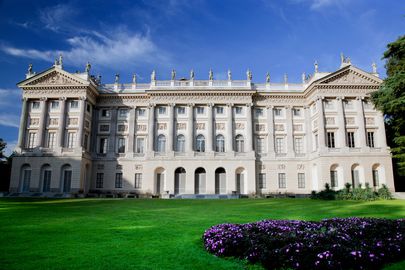

The important Modern Art Gallery is housed in the lavish Villa Reale, also known as Villa Belgiojoso Bonaparte, which was built in the neo-classical style between 1790 and 1796 for Count Ludovico di Belgiojoso. The count had already made a brilliant career as a diplomat in the Holy Roman Empire, which the Duchy of Milan had been a part of, serving both Empress Maria Teresa and subsequently her son Emperor Joseph II. Upon returning to Milan, after having garnered all the laurels a diplomat could garner, Ludovico hired Austrian architect Leopoldo Pollack to reconstruct the old family residence in front of the public gardens.
During the Napoleonic Italian Republic, which lasted from 1802 to 1805, the villa became a temporary residence of the French ruler and a permanent residence of his stepson, Eugene di Beauharnais, who was Viceroy of Italy from 1805 to 1814. After Milan and the rest of Lombardy returned to Austria, the villa was inhabited by Marshal Josef Radetsky. It was here that the marshal signed the Peace of Milan, which formalized Italy's defeat in the First War for Independence.
In 1920 Villa Reale become the property of the Milanese Municipality, which a year later established the Modern Art Gallery. The gallery contains works by Antonio Canova, Giovanni Boldini, Francesco Hayez, Umberto Boccioni Edourd Manet, Paul Cezanne, Vincent van Gogh, Pablo Picasso and others. Canova's sculpture had already stood in the villa as part of the original décor ever since the building's construction.
After the World War II, in which the villa did not go unscathed, the municipality decided to build an additional wing, the Contemporary Art Pavilion, to house temporary exhibitions.